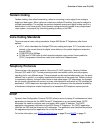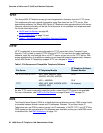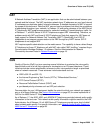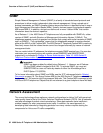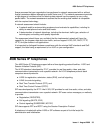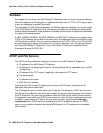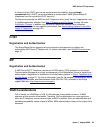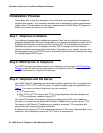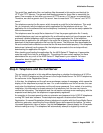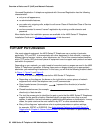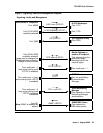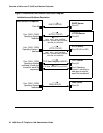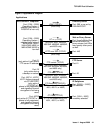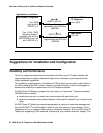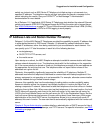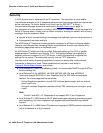
Initialization Process
Issue 4 August 2006 37
The script files, application files, and settings files discussed in this section are identical for
HTTP and TFTP servers. The general downloading process for those files is essentially the
same. One exception is that when you use an HTTPS server, a TLS server is contacted first.
Therefore, we use the generic term “file server” here to mean both “TFTP server” and “HTTP
server.”
The telephone queries the file server, which transmits a script file to the telephone. This script
file, at a minimum, tells the telephone which application file the telephone must use. The
application file is the software that has the telephony functionality, and can be easily updated for
future enhancements.
The telephone uses the script file to determine if it has the proper application file. A newly
installed telephone may have no application file, and therefore would not have the proper one. A
previously installed telephone might not have the proper application file. If the telephone
determines the application file indicated in the script file is missing, the telephone requests a
download of the proper application file from the file server. The file server then downloads the
file and conducts some checks to ensure that the file was downloaded properly. If the telephone
determines it already has the proper file, the telephone proceeds to the next step without
downloading the application file again.
After checking and loading the application file, the 4600 Series IP Telephone, if appropriate,
uses the script file to look for a settings file. The settings file can contain options you have
administered for any or all of the 4600 Series IP Telephones in your network. For more
information about this settings file, see Administering Options for the 4600 Series IP
Telephones on page 100.
Step 4: Telephone and the Call Server
The call server referred to in this step differs depending on whether the telephone is H.323 or
SIP. For H.323 IP telephones, the call server is the Avaya Media Server. For SIP IP telephones,
the call server is the Registration Server.
In this step, the telephone and the call server exchange a series of messages, which cause the
display on the telephone to prompt the user. For a new installation and for full service, the user
must enter the telephone’s extension and the call server password. For a restart of an existing
installation, this information is already stored on the telephone, but the user may have to
confirm the information. The telephone and the call server exchange more messaging, with the
expected result being that the telephone is appropriately registered.
An exception to the requirement to enter an extension and password is for H.323 IP telephones
running R2.3 and later software. These telephones support a feature called Unnamed
Registration. Unnamed Registration allows a telephone to register with the Avaya Media Server
without an extension, assuming the Avaya Media Server also supports this feature. To invoke
Unnamed Registration, take no action—just let the Extension... prompt display for 60 seconds
without making an entry. The telephone will automatically attempt to register by means of



